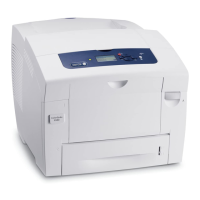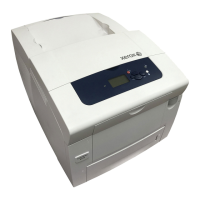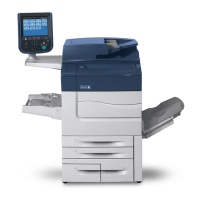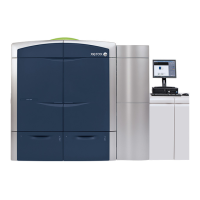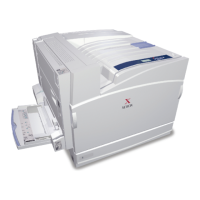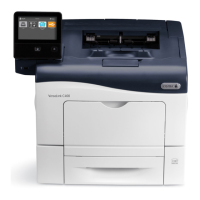Installation and Setup
ColorQube 8570/8870 Color Printer
User Guide
32
Assigning the Printer’s IP Address
This section includes:
• Automatically Assigning the IPv4 Address on page 32
• Manually Assigning the IPv4 Address on page 33
• Configuring IPv6 on page 34
• Resetting the TCP/IP Configuration on page 38
If your computer is on a large network, contact the network administrator for the appropriate TCP/IP
addresses and additional configuration information.
If you are creating your own small Local Area Network or connecting the printer directly to your
computer using Ethernet, follow the procedure for automatically setting the printer’s Internet Protocol
(IP) address.
The IP address can be assigned automatically by using the AutoIP protocol or the DHCP protocol, or
manually by specifying a fixed address. Network addresses assigned by DHCP are temporary, however.
After a specified time, the network may assign a new IP address to the printer, which may cause a
connectivity problem for you. To fix this, or if your network administrator requires a static IP address for
the printer, you can assign the IP address to the printer manually. For details, see Manually Assigning
the IPv4 Address on page 33.
See also:
Online Support Assistant at:
ColorQube 8570 printer: www.xerox.com/office/CQ8570support
ColorQube 8870 printer: www.xerox.com/office/CQ8870support
Automatically Assigning the IPv4 Address
By default, your printer is set to be recognized automatically by the network to which it is connected,
acquiring an IP address using DHCP. In this case, you do not need to do anything except write down
the printer’s IP address; you will need it for accessing CentreWare IS and installing the software. After
the printer is connected to the network, it will automatically seek an available IP address.
Notes:
• For the automatic Installer to function, the printer must be connected to an established
TCP/IP network.
• You can view your printer’s IP address at any time from either the Configuration page or
the printer control panel. For details, see Finding the Printer’s IP Address on page 40.
If you need to assign the IP address using a method other than DHCP or for a protocol other than IPv4,
such as IPv6, see Configuring IPv6 on page 34, or refer to the CentreWare IS online help.

